Column-I show graph of electric potential V versus x and y in a certain region for four situations. Column-II shows the range of angle which the electric field vector makes with positive x-direction
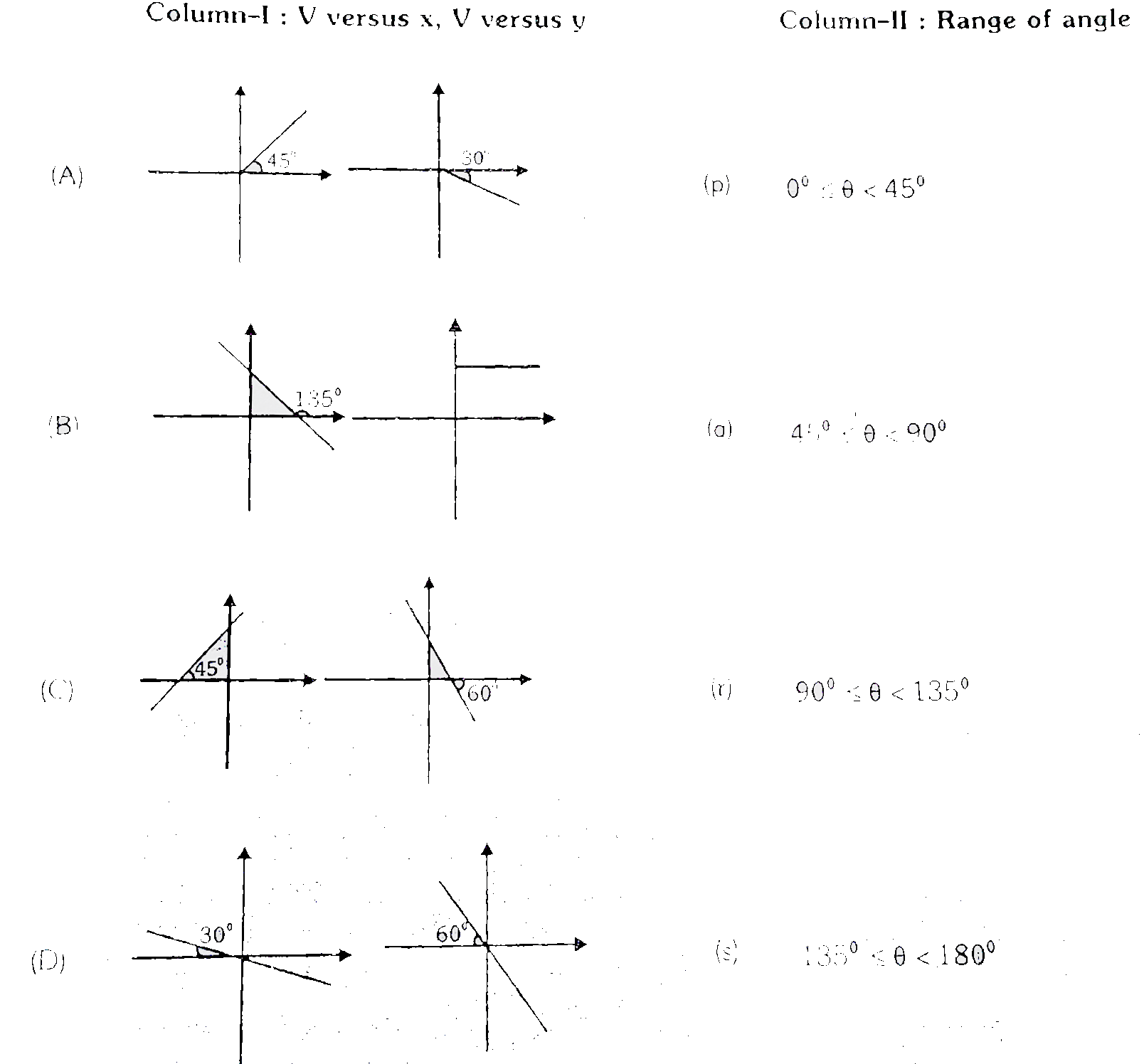 Solution in Gujrati
Solution in Gujrati
The correct Answer is:(A) s, (B) p, (C) r, (D) q
Electric field →E=−∂V∂xˆi−∂V∂yˆj
For (A): →E=−ˆi+1√3ˆj
For (B): →E=+ˆi
For (C): →E=−ˆi+√3ˆj
For (D): →E=+1√3ˆi+√3ˆj
Topper's Solved these Questions
- MISCELLANEOUSBOOK - ALLEN CHAPTER - MISCELLANEOUSEXERCISE - ASSERTION-REASON
18 Videos
- MISCELLANEOUSBOOK - ALLEN CHAPTER - MISCELLANEOUSEXERCISE - Comprehension 1
5 Videos
- MISCELLANEOUSBOOK - ALLEN CHAPTER - MISCELLANEOUSEXERCISE - Exercise-01
87 Videos
- KINEMATICS (MOTION ALONG A STRAIGHT LINE AND MOTION IN A PLANE)BOOK - ALLEN CHAPTER - KINEMATICS (MOTION ALONG A STRAIGHT LINE AND MOTION IN A PLANE)EXERCISE - BEGINNER S BOX-7
8 Videos
- PHYSICAL WORLD, UNITS AND DIMENSIONS & ERRORS IN MEASUREMENT BOOK - ALLEN CHAPTER - PHYSICAL WORLD, UNITS AND DIMENSIONS & ERRORS IN MEASUREMENT EXERCISE - EXERCISE-IV
7 Videos
Similar Questions
Statement 1: whenevever the unit of measurement of a quantity is changed, its numerical value changes.
and
Statement -2 : Smaller the unit of measurement smaller is its numerical value.
View SolutionThe van der waal's gas equation is (P+aV2)(V−b)=RT, where P is pressure, V is molar volume and T is the temperature of the given sample of gas. R is called molar gas constant, a and b are called van der waal's constants.
The dimensional formula for b is same as that for
View SolutionA stone is dropped into a quiet lake and waves move in circles speading out radially at the speed of 5 cm/s. At the instant when the radius of the circular wave is 8cm, how fast is the enclosed area increasing?
View SolutionA football player kicks a ball at an angle of 30∘ with an initial speed of 20 m/s. Assuming that the ball travels in a vertical plane, calculate (a) the time at which the ball reaches the highest point (b) the maximum height reached (c) the horizontal range of the ball (d) the time for which the ball is in the air, (g=10m/s2)
View SolutionAssertion : Gravitational forces do not depend on the medium between the masses.
Reason : Mediating particle responsible for gravitational force is graviton.
View SolutionA graph of the x-component of the electric field as a function of x in a region of space is shown in figure. The y−andz−compo≠nts of the electric field are zero in this region. If the electric potential is 10 V at the origin, then the potential at x = 2.0 m is
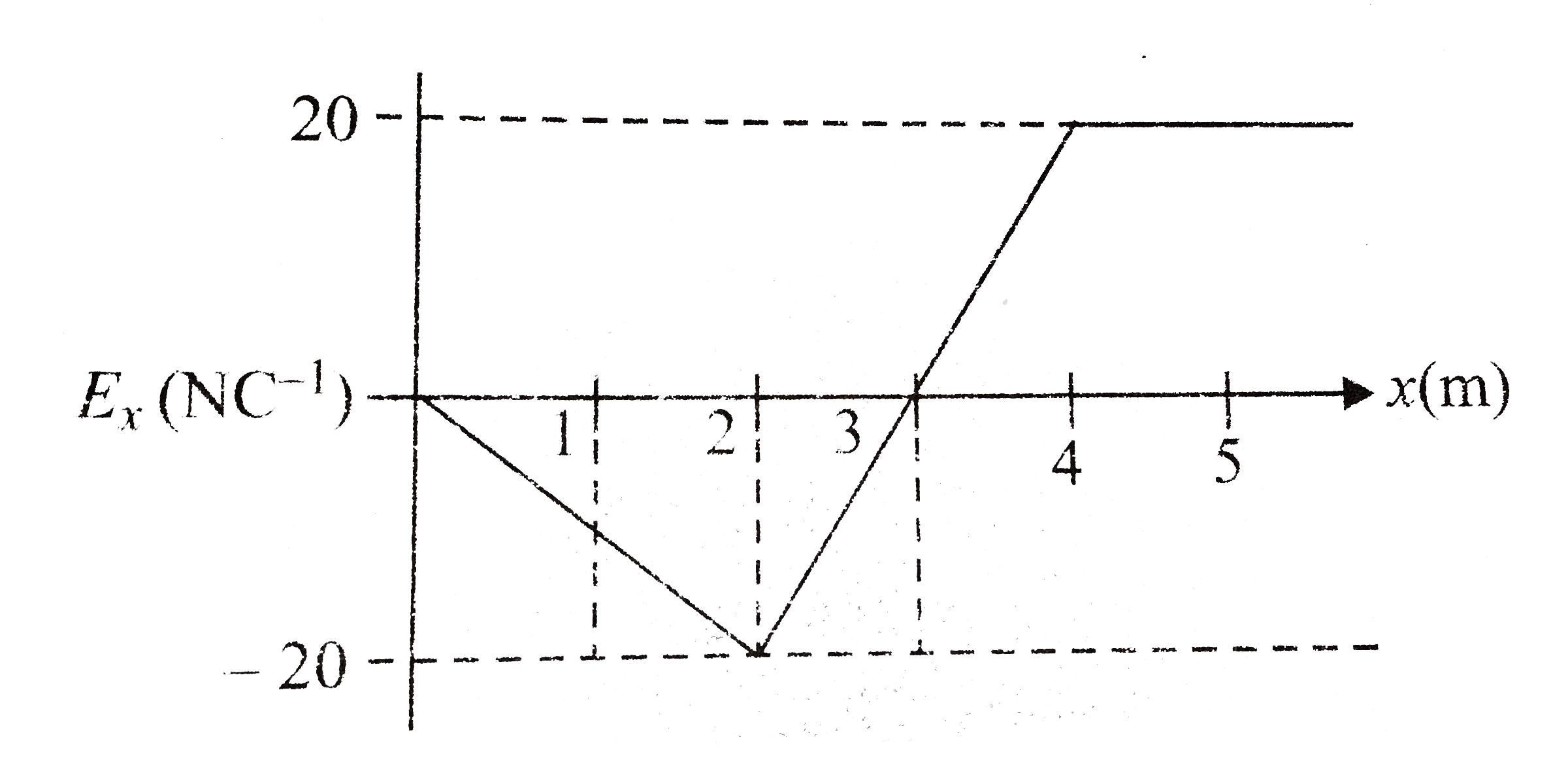
View SolutionColumn-I show graph of electric potential V versus x and y in a certain region for four situations. Column-II shows the range of angle which the electric field vector makes with positive x-direction

View SolutionColumn I shows graphs of electric potential V versus x and Y in a certain region for four situations Column II shows the range of angle which the electric field vector makes with positive x-direction.
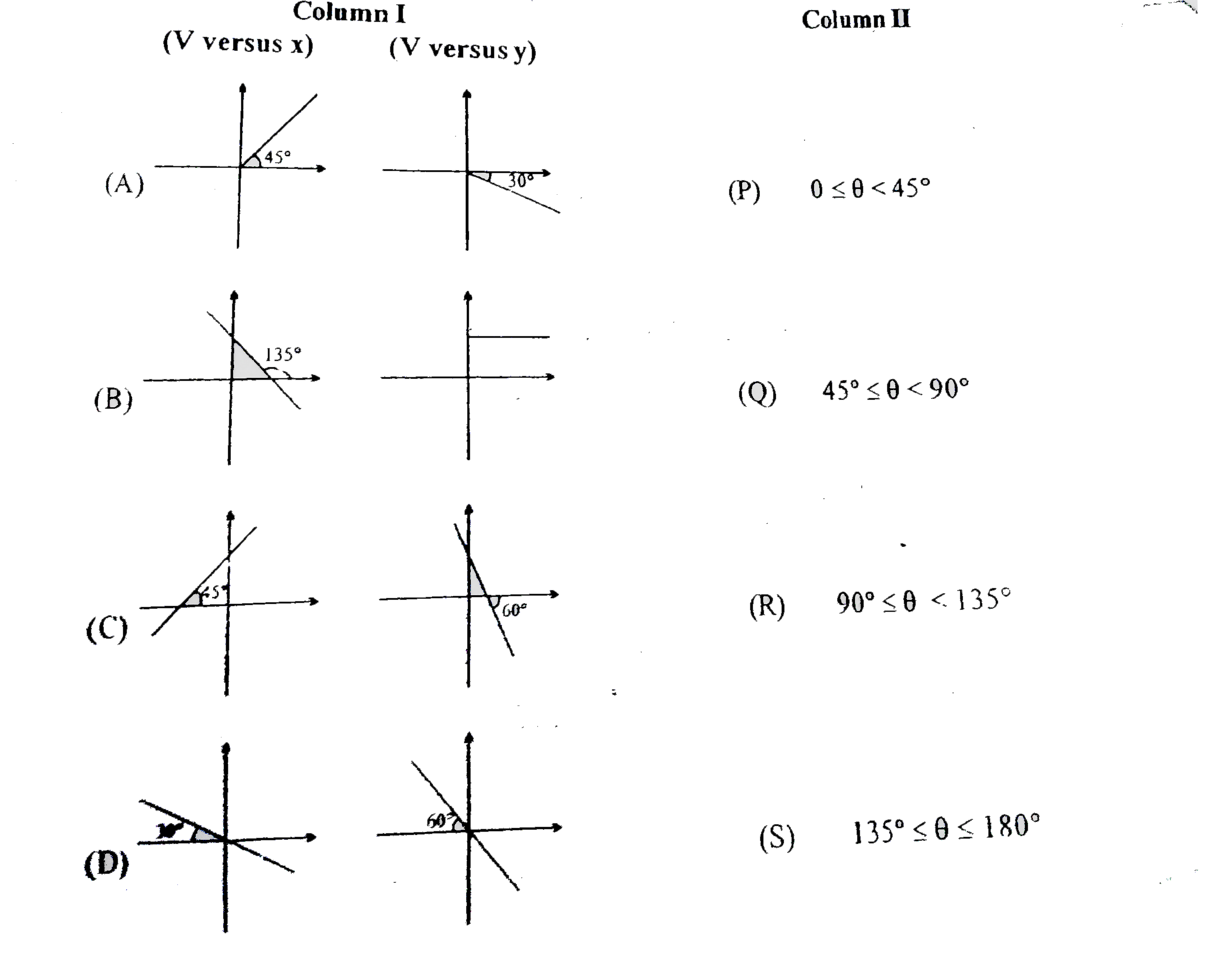
View SolutionDetermine the electric field strength vector in a region if in space the potential of this field depends on x and y coordinates as V=a(x2−y2).
View SolutionColumn-1 shows certain situations with certain conditions and column-2 shows the parameters in which situations of column-1 match. Which can be possible combination.
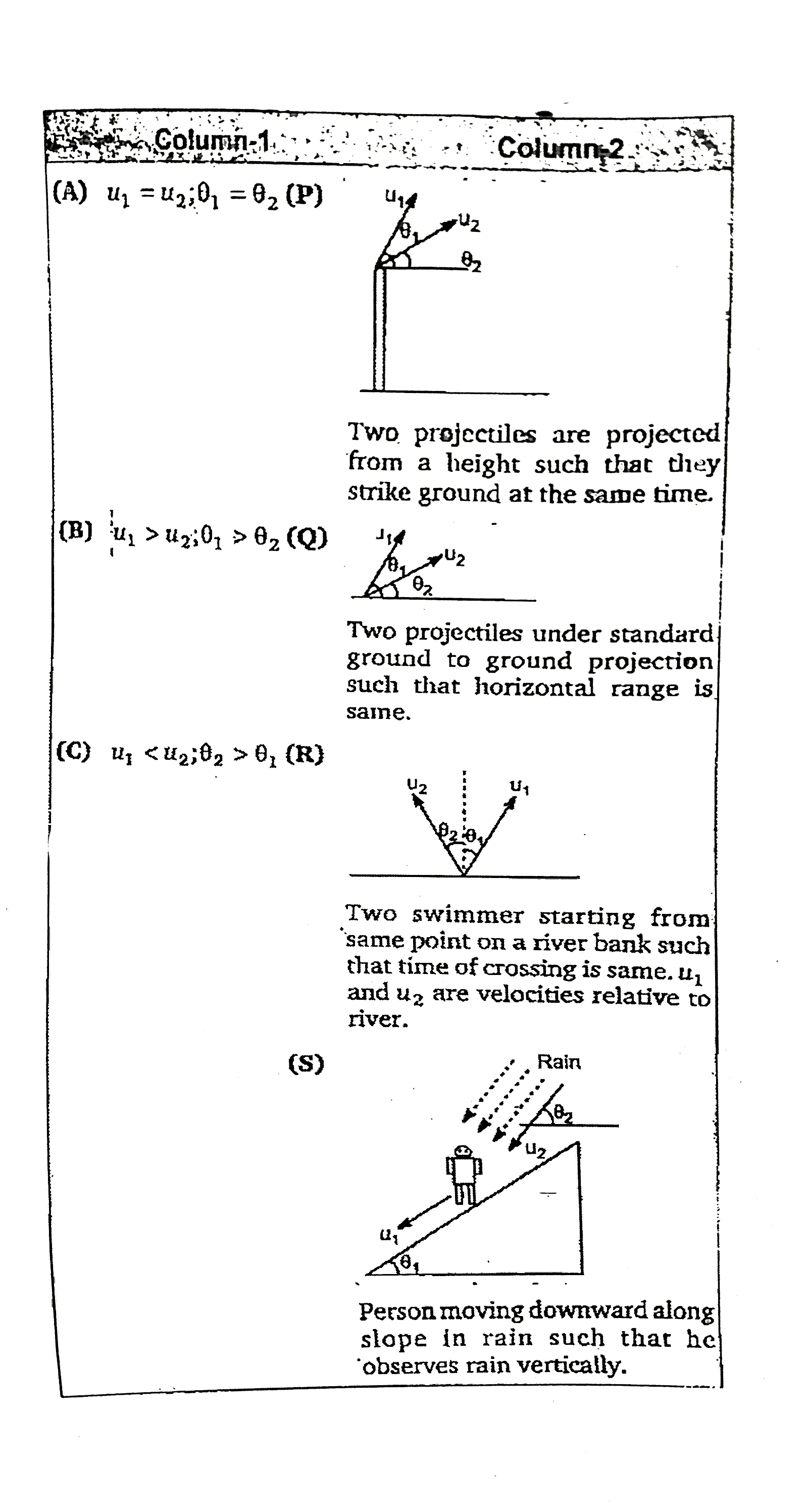
View SolutionColumn-1 shows certain situations with certain conditions and column-2 shows the parameters in which situations of column-1 match. Which can be possible combination.
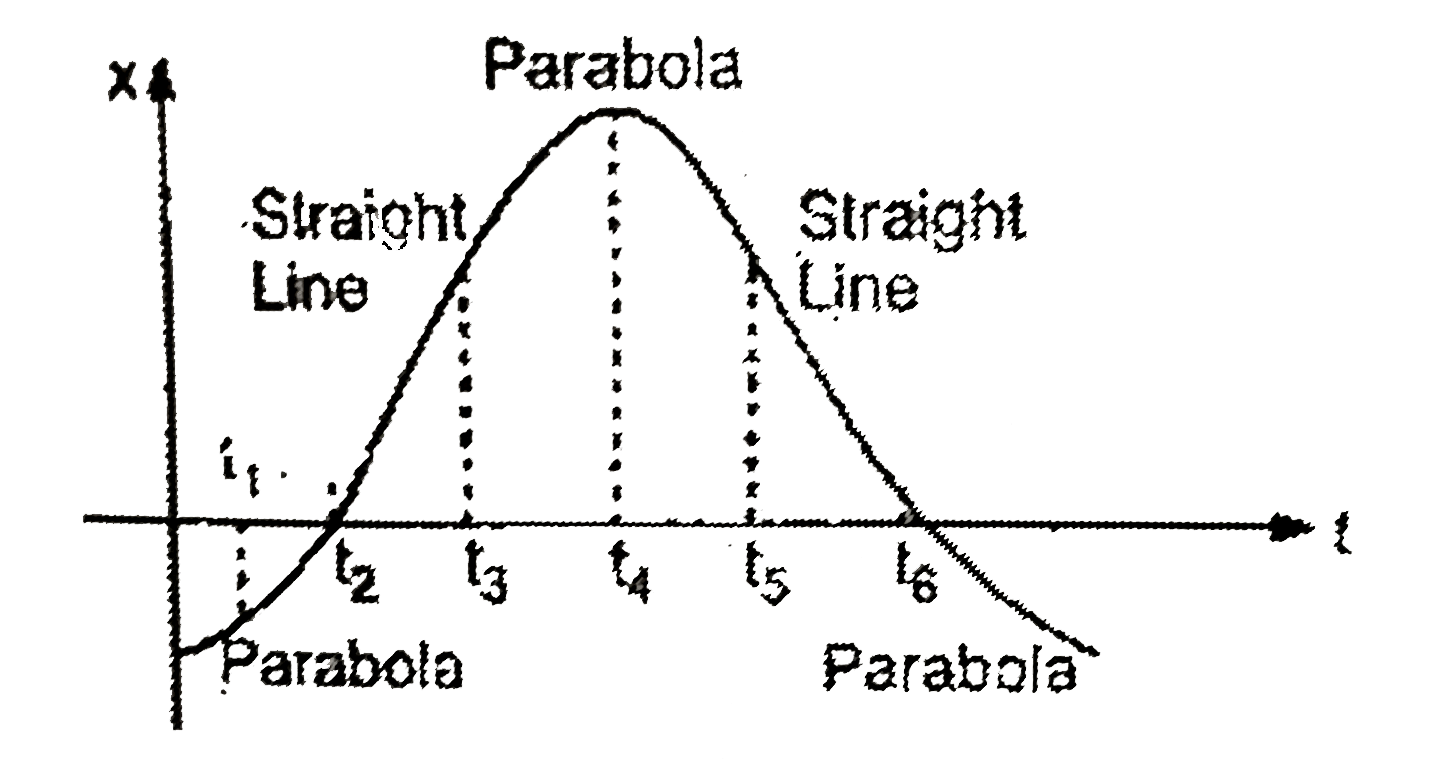

View SolutionColumn-I shows certain situation and column-2 shows information about forces.
View SolutionColumn-I shows a-t graph and column-II shows v-t graph. Mathc the column-I and column-II.
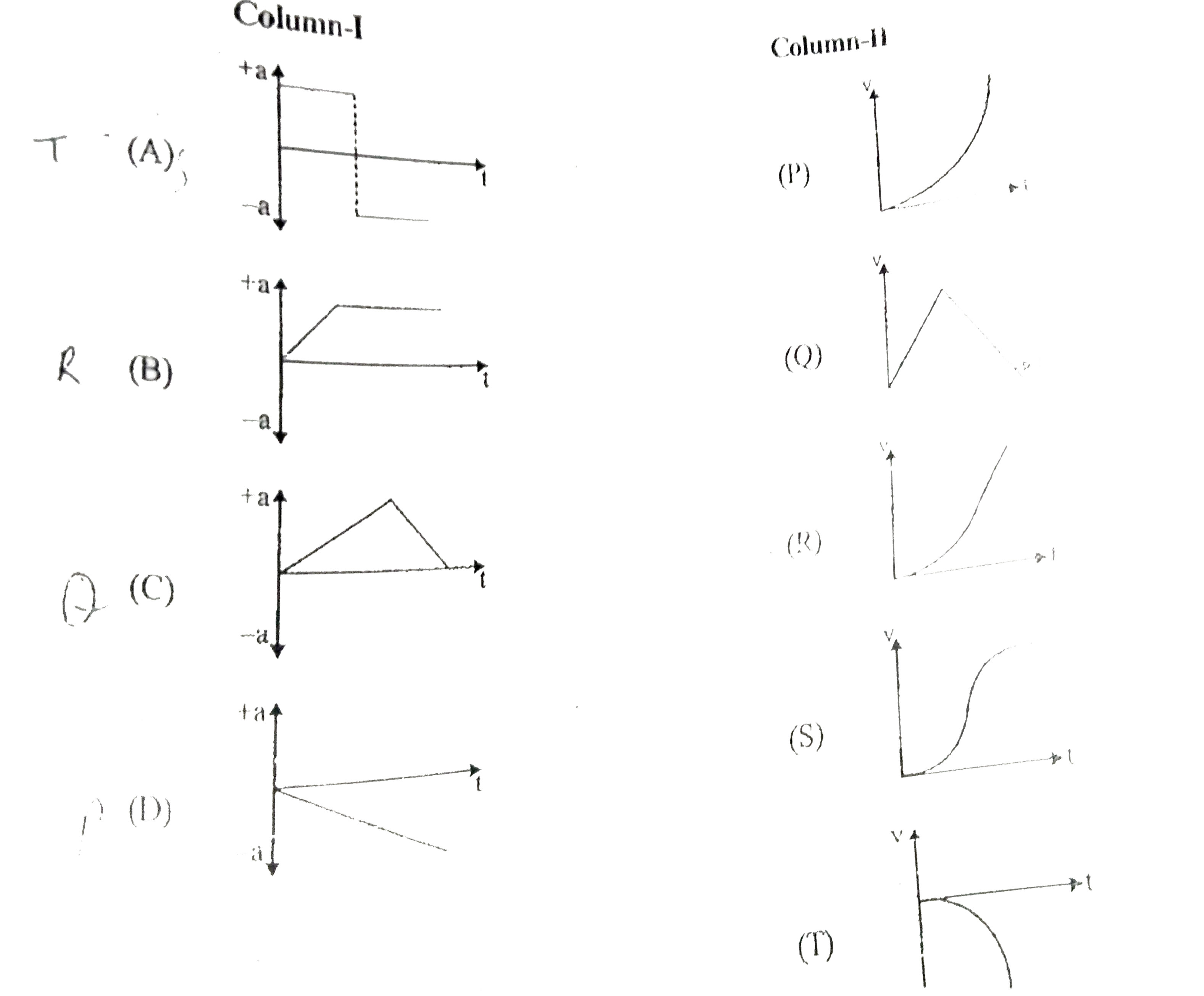
View SolutionIn a certain region of space the electric potential V is known to be constant. Is the electric field in this region (a) positive (b) zero ,or (c ) negative ?
View SolutionAn electric dipole is placed in an electric field. Column I is the description of electric field and the angle between the dipole moment →p and the electric field intensity →E and Column II gives the effect of the field on the dipole. Then,
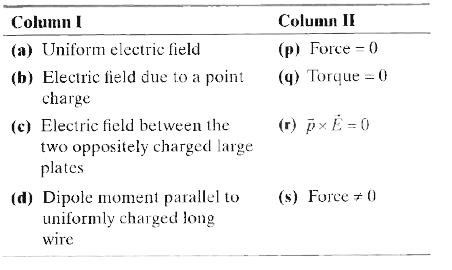
View Solution
